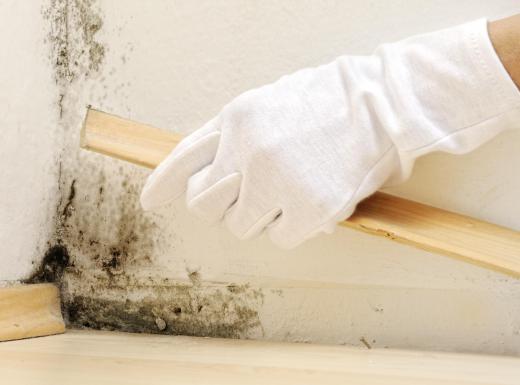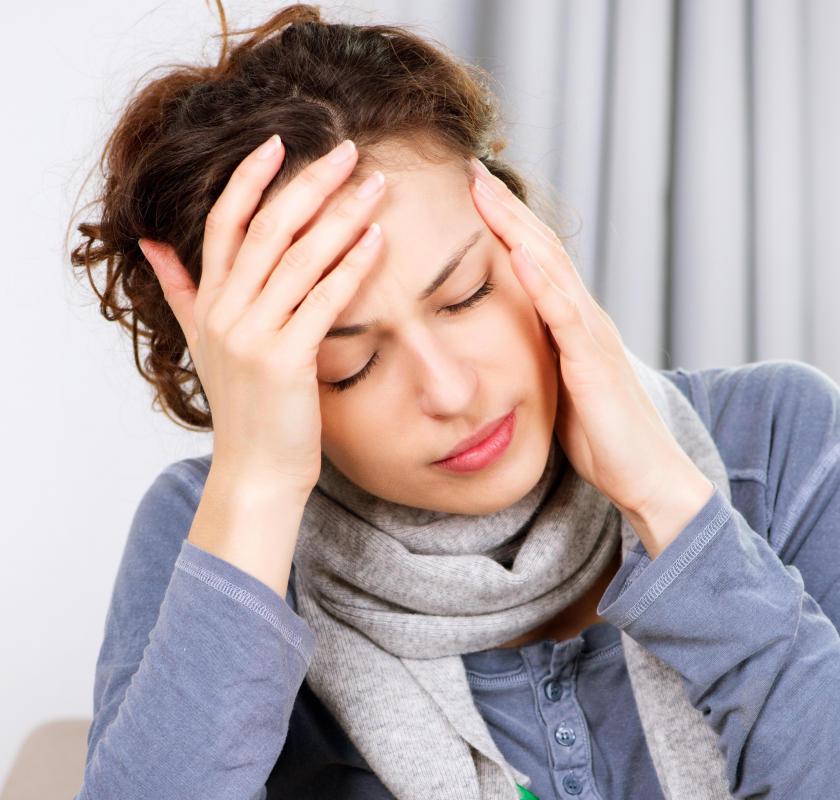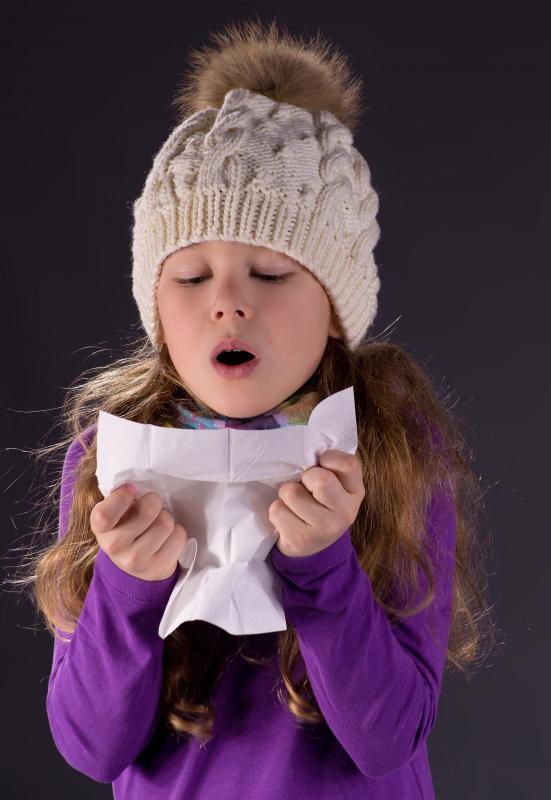At AllThingsNature, we're committed to delivering accurate, trustworthy information. Our expert-authored content is rigorously fact-checked and sourced from credible authorities. Discover how we uphold the highest standards in providing you with reliable knowledge.
What is Black Mold?
Mold belongs to the fungi kingdom that consists of more than one million species. These organisms are saprophytic, meaning that they depend on the breakdown of organic material in order to thrive. Black mold, commonly known as mildew, is a blackish-green belonging to the Stachybotrys family, specifically the fungus S. chartarum. Other words and phrases that have become synonymous with black mold are toxic mold and sick building syndrome.
For black mold to develop in residential homes or commercial buildings, certain conditions must be present. First and foremost, there must be sufficient moisture present. In fact, black mold most often starts in buildings where water damage has occurred, either from flooding, leaky plumbing, or even excessive condensation. Secondly, since mold needs organic matter to feed off of, any material present that contains carbon can provide a surface for mold to grow on. Indoor materials that can support mold include leather, wallpaper, carpeting, wood, insulation, and sheetrock.

This material is also self-replicating. What is actually visible as a moldy film on a surface is the mycelium, or the main body of the fungus. This forms when the filamentous cells of the fungus called the hyphae produce enzymes to decompose neighboring organic material, the organism’s primary source of nutrition. Eventually, these hyphael cells form spores, which are released to germinate and further the spread of the mold. These spores are extremely resilient and can lie dormant for years before germinating.

Overgrowth of black mold can comprise the air quality of an indoor space rather quickly. For one thing, this substance produces volatile organic compounds (VOCs), which are responsible for producing the musty smell commonly associated with moldy areas. It may also produce an opportunistic infection in those who already have a compromised immune system that wouldn’t ordinarily occur in a healthy person. Individuals that may become infected include HIV/AIDS patients, organ transplant recipients, or those undergoing chemotherapy. Black mold is also linked to causing or elevating allergies, asthma, and sinusitis.

Symptoms of mold toxicity vary between individuals. However, symptoms of central nervous system suppression are commonly reported, such as headaches, difficulty concentrating, and light-headedness. In addition, allergy-driven responses are also common, including sneezing, watery eyes, coughing, and throat irritation.
Mold removal can be a long and physically intensive endeavor, but it is not impossible to accomplish. However, it is essential that anyone at high risk from negative health consequences from mold exposure be evacuated from the site prior to initiating the clean up process. In addition, anyone involved in mold remediation should wear protective clothing and related eye and respiratory gear. All moldy materials must be removed from the premises and contained until it can be properly disposed of. Once problem areas have been improved, it is essential to address moisture problems in the environment to prevent future contamination.
Frequently Asked Questions
What exactly is black mold?

Black mold, scientifically known as Stachybotrys chartarum, is a type of fungus that thrives in damp, water-damaged environments. It appears as a dark green or black gelatinous growth, often with a musty odor. Black mold releases spores that can cause health issues, particularly in individuals with allergies or compromised immune systems.
How does black mold affect human health?
Exposure to black mold can lead to respiratory problems, allergic reactions, and in severe cases, mycotoxicosis—poisoning by mold toxins. Symptoms include coughing, sneezing, irritation of the eyes and skin, and chronic fatigue. Individuals with asthma or other respiratory conditions may experience exacerbated symptoms, according to the Centers for Disease Control and Prevention (CDC).
Where is black mold most commonly found in homes?
Black mold typically grows in areas with persistent moisture, such as bathrooms, basements, and around leaky pipes or windows. It can also develop behind walls or under flooring due to unseen water damage. Homes with poor ventilation or previous water damage are at higher risk for mold growth, as stated by the Environmental Protection Agency (EPA).
Can black mold be completely removed from a home?
While small areas of mold can be cleaned with proper safety measures, extensive mold infestation often requires professional remediation. Complete removal of black mold from a home may involve repairing water damage, improving ventilation, and replacing contaminated materials. The EPA recommends hiring a professional if the moldy area is larger than 10 square feet.
How can I prevent black mold in my living space?
Preventing black mold involves controlling moisture levels in your home. Use dehumidifiers and exhaust fans, fix leaks promptly, and ensure your home has adequate ventilation. Regularly cleaning and inspecting potential problem areas, such as bathrooms and basements, can also help prevent mold growth, as suggested by the EPA's guidelines on mold prevention.
Is it safe to clean black mold by myself?
Cleaning small areas of black mold yourself is possible if you take appropriate safety precautions, such as wearing gloves, goggles, and a mask. However, for larger infestations or if you're sensitive to mold, it's safer to consult a professional. Disturbing mold can release spores into the air, increasing the risk of respiratory issues.
AS FEATURED ON:
AS FEATURED ON:














Discussion Comments
BrickBack- I think that if you are buying a house that has black mold spores you really have to consider how worth it is to buy that house.
For me personally, I would rather find another home that does not have that problem because just because a seller says they will have it fixed does not mean that the job will be adequate to your standards.
Also you have to consider how did the water damage occur? If the area is a low lying area subject to flooding then you may want to consider a different area that is on higher ground. The idea of a black mold house really scares me as well as most buyers.
Household black mold is not only dangerous to your health but it could be costly to repair. Killing black mold requires a mold remediation expert that will carefully remove the toxic mold from your home.
Depending on the size of your home, mold remediation can cost anywhere from $5,000 to $50,000 depending on the extent of the damage and how long the home as been infested with mold.
If you start experiencing a lot of upper respiratory problems you could have household black mold.
Post your comments